There is a variety of flowers name starting with I. One of the most popular flowers that starts with “I” is the iris. With its unique and striking appearance, iris flowers come in a wide range of colors, including purple, white, yellow, and blue.
Another flower that starts with “I” is the impatiens. These flowers are often used as a colorful and low-maintenance addition to a garden or landscape. They come in a variety of colors, including pink, red, orange, and white. The Indian paintbrush is another beautiful flower that starts with “I”. These bright red flowers are often seen growing wild in meadows and fields.
Other flowers that start with “I” include the indigo, ivy, and ice plant, which is known for its unique ability to resist drought and extreme temperatures. All of these flowers add a unique flair to any garden or flower arrangement.
Flowers Name Starting with I
Ice Plant
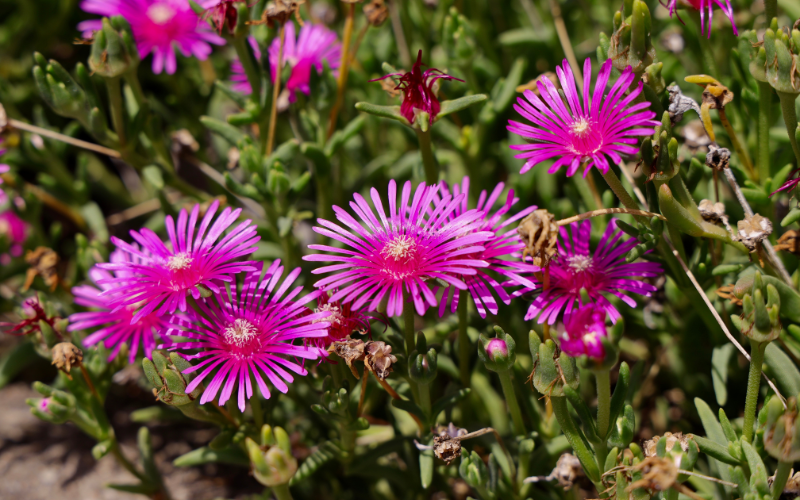
Ice plant is a beautiful flowers. It is also known as Delosperma. This plant is known as the ice plant because its leaves have a gleaming, frosty appearance that sparkles in the sunlight. Ice plants thrive in sandy or rocky soil and can be grown in hot and dry areas. They are particularly well-known for their colorful flowers, which bloom in pink, purple, red, and yellow.
These flowers bloom in the summer and may provide a splash of color to any garden or environment. If you want a plant that is easy to care for and can withstand tough conditions, the ice plant is a good choice.
| Scientific Name | Delosperma |
| Native Range | Southern Africa, including South Africa, Namibia, and Lesotho |
| Flowering Season | Late spring or early summer |
Indian Blanket

Indian Blanket is a lovely and colorful wildflower that is native to North America. Because of its beautiful look, Indian Blanket, also known by its scientific name, Gaillardia pulchella, has become a favorite of many gardeners and nature lovers.
The flower features bright yellow or orange petals with scarlet or maroon ends, giving it a unique and appealing appearance. Indian Blanket is also a resilient plant that can resist heat, drought, and poor soil conditions, making it an excellent choice for anyone looking to add color to their yard without requiring too much upkeep.
| Scientific Name | Gaillardia pulchella |
| Native Range | North and Central America |
| Flowering Season | Summer |
Iceland Poppy
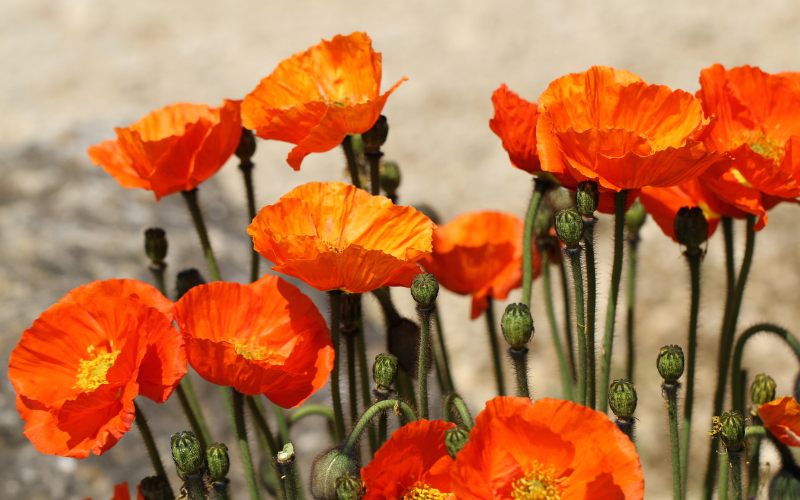
The Iceland Poppy Flower is a beautiful and unique flower. That is native to the subpolar regions of Europe and North America, including Iceland (hence the name). It is a hardy flower that can grow in a variety of different climates and soil types.
The Iceland Poppy Flower features delicate petals that come in a range of colors from white to yellow to orange to pink, and it blooms in the spring and summer months. This flower is often used in floral arrangements and bouquets because of its beauty and unique appearance. The Iceland Poppy Flower is a symbol of peace, prosperity, and success, making it a popular choice for gifts and decorative purposes.
| Scientific Name | Papaver nudicaule |
| Native Range | Norway, Sweden, Finland, Russia, and Greenland |
| Flowering Season | Late spring to early summer |
Indigo Plant
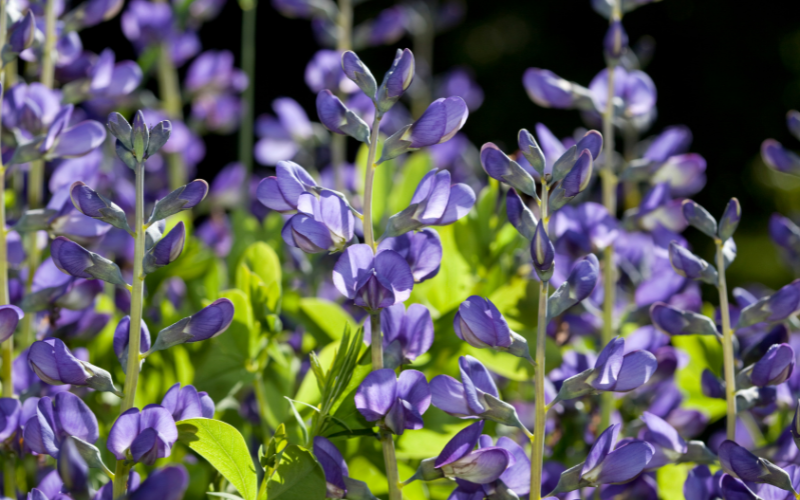
The indigo plant is a beautiful flower. The plant is native to India but has spread to other parts of the world such as China, Egypt, and South America. The process of making indigo dye is quite complex and involves fermenting the leaves in water for several hours.
The water then turns green, and the indigo dye is separated from the green liquid. The Indigo dye has been used to dye everything from denim to traditional Japanese garments. It has also been used for medicinal purposes such as treating inflammation and respiratory issues. The indigo plant is not only beautiful but also has a rich cultural significance.
| Scientific Name | Indigofera |
| Native Range | Asia, Africa, and the Americas |
| Flowering Season | Spring and summer |
Impatiens
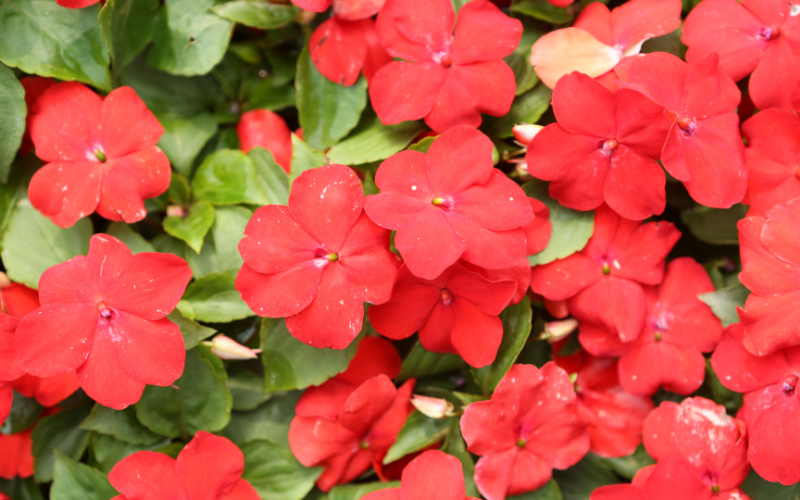
Impatiens flowers are delicate and beautiful, known for their vibrant colors and ability to brighten up any garden or outdoor space. They come in a range of colors, from bright pinks and purples to soft pastels and even white.
They bloom in the summer and fall and are a great option for those who want to add some color to their garden without having to put in too much effort. They are easy to care for and require little maintenance, making them a popular choice for both beginner and experienced gardeners alike.
| Scientific Name | Impatiens walleriana |
| Native Range | Tropical and subtropical regions of Africa, Asia, and the Himalayas |
| Flowering Season | Late spring or early summer |
Irises
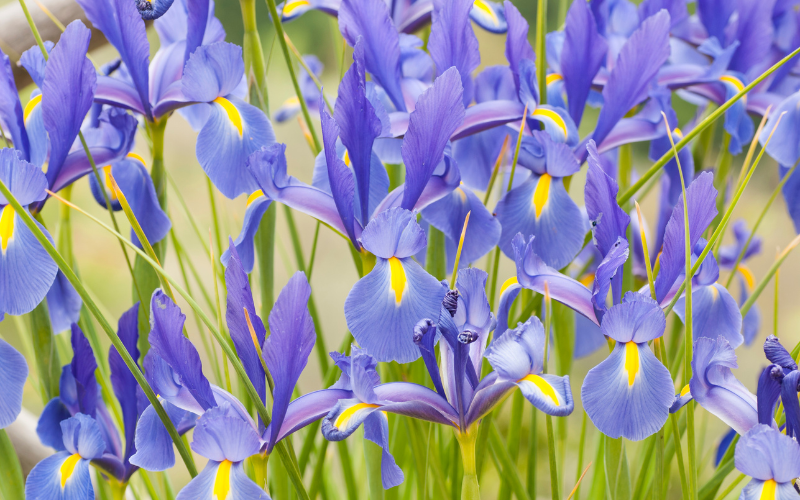
Irises are a type of flowering plant that is known for its stunning beauty and unique appearance. They are native to Europe, Asia, and North America and are commonly found in gardens and as cut flowers.
Irises come in a wide variety of colors, including shades of blue, purple, pink, yellow, white, and even black. They are also known for their distinctive shape, which consists of three petals and three sepals that form a cup-like structure. In addition to their ornamental value, irises have also been used for medicinal purposes, particularly in traditional Chinese medicine.
| Scientific Name | Iris |
| Native Range | Europe, Asia, North America, and parts of Africa |
| Flowering Season | Spring and early summer |
Ipheion Uniflorum
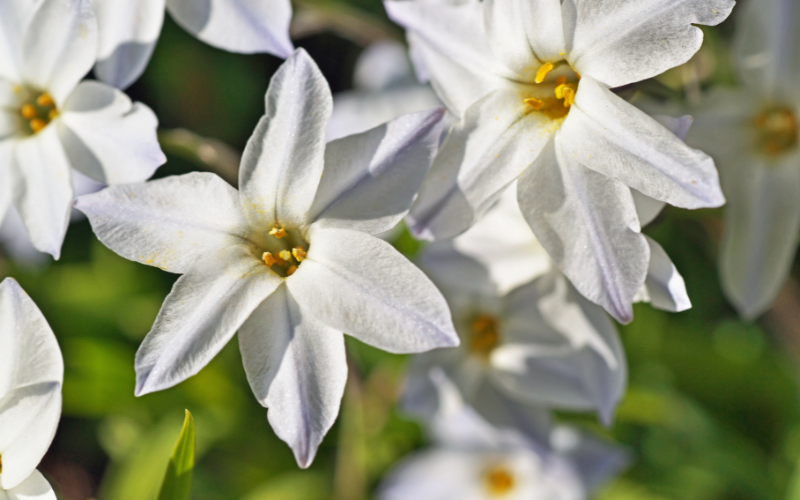
Ipheion Uniflorum is a beautiful perennial plant that is native to South America. It belongs to the Allium family and is popular for its gorgeous blue or white star-shaped flowers.
The plant grows up to 12 inches tall and has grass-like foliage that is about the same length as the flower stalk. Ipheion Uniflorum is an easy plant to care for and can be grown in most soil types as long as it is well-draining. It prefers full sun but can also tolerate partial shade.
| Scientific Name | Ipheion uniflorum |
| Native Range | South America |
| Flowering Season | Spring |
Inch Plant
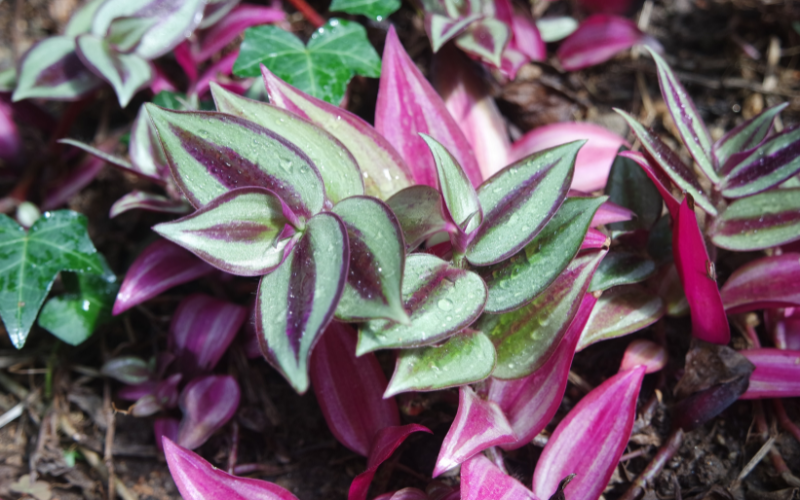
The Inch Plant is a lovely and low-maintenance plant that can bring some color to your home. It is a trailing plant with striped leaves that appear in green, purple, and silver colors. Inch Plant requires little care and thrives in bright, indirect sunshine.
It is also very forgiving if you forget to water it every now and then. Water only when the top inch of soil is dry. One of the best features of Inch Plant is its rapid growth, which allows it to quickly fill a hanging basket or trail down from a bookshelf. It is also an excellent air cleaner and can help to improve the air quality. quality in your home.
| Scientific Name | Tradescantia zebrina |
| Native Range | Mexico, Central America, and parts of South America |
| Flowering Season | Spring and summer |
Irish Moss

Irish moss, also known as Sea moss, is a form of red algae found in the Atlantic Ocean along Europe and North American coasts. Iodine, iron, calcium, and vitamins A, E, and K are all found in Irish Moss. Irish Moss is a popular component in skincare products because of its high collagen content, which can help to enhance skin suppleness and decrease the appearance of fine lines and wrinkles.
It is a thickening that can be used in smoothies, soups, and desserts. However, Irish Moss should be rinsed and soaked before consumption to eliminate any sand or debris, and it should be consumed in moderation because it contains high levels of iodine.
| Scientific Name | Chondrus crispus |
| Native Range | Ireland, Scotland, and other parts of the northeastern Atlantic, such as Canada and the northeastern United States |
| Flowering Season | Spring |
Indian Paintbrush
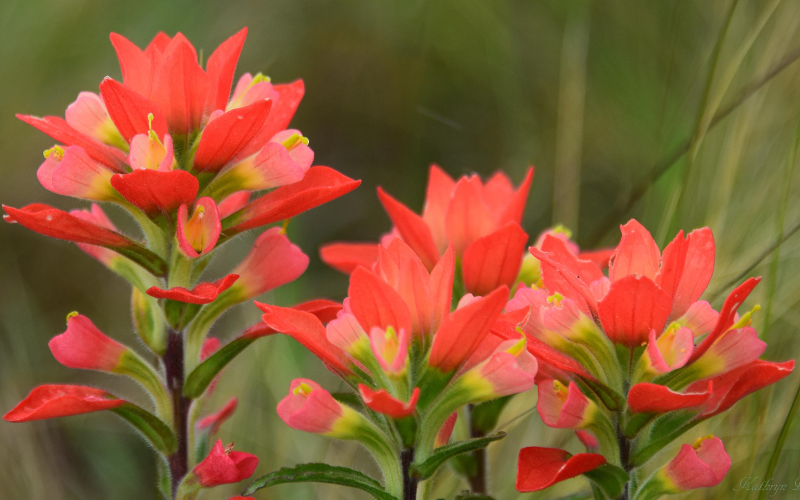
Indian Paintbrush is a beautiful wildflower that is native to North and South America. This wildflower is commonly found in open fields, meadows, and prairies. They have tall, slender stems that grow between one and three feet tall, with bright red to orange flowers that bloom in the spring and summer.
The plant gets its name from the brightly colored flowers that resemble a paintbrush. The Indian Paintbrush has a unique relationship with the soil it grows in, it’s often seen growing near sagebrush and other plants with deep roots. This wildflower is not only beautiful, but it also serves a key role in the ecosystem by providing food for hummingbirds and other pollinators.
| Scientific Name | Castilleja |
| Native Range | North America |
| Flowering Season | Late spring to early summer |
Ivory Bells
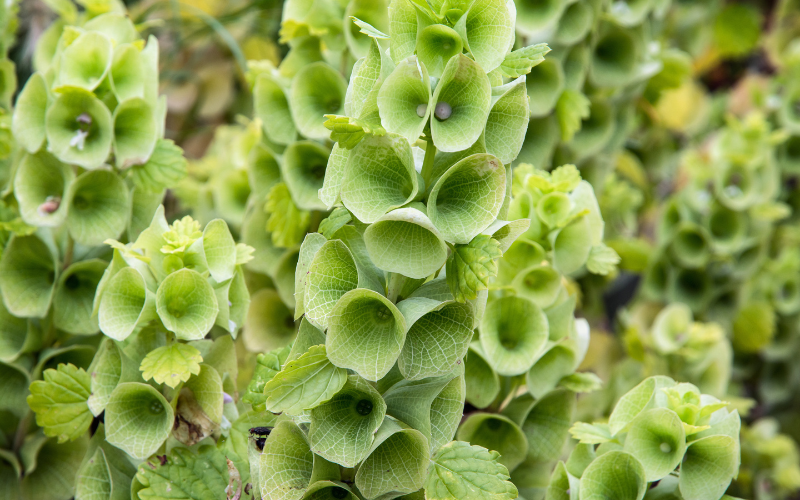
Ivory Bells, or Fritillaria affinis, is native to western North America that is identified by bell-shaped blooms hanging gently from thin stalks. The name “Ivory Bells” depicts its lovely creamy-white color, imparting purity and grace to any spot.
These bloom in early spring and need well-drained soil. They can grow up to 3 feet tall. Ivory Bells wave in the breeze, giving motion and energy to the garden, and also attract pollinators like bees and butterflies, adding to the natural beauty.
| Scientific Name | Fritillaria meleagris ‘Alba’ |
| Native Range | Europe & Western Asia |
| Flowering Season | Spring |
Indian Pipe
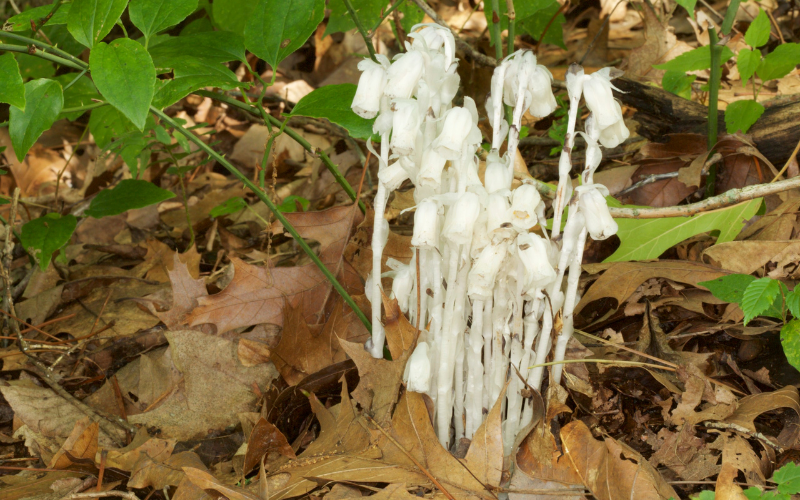
Indian Pipe, or Ghost Plant, is an attractive flower of the Monotropaceae family. Native to Asia and North America, this flower comes in ghostly white or pale pink colors, simulating a ghostly form.
Blooming in summer and early fall, it likes rich, moist soil, and can grow up to 10 inches tall. Its delicate blossoms hang like inverted umbrellas, with a solo leaning bloom at each stem’s end. Its unique look, which is like a milky white pipe or candlestick, creates a charming view of nature.
| Scientific Name | Monotropa uniflora |
| Native Range | Asia, North America, South America |
| Flowering Season | Summer to fall |
Iceberg Rose
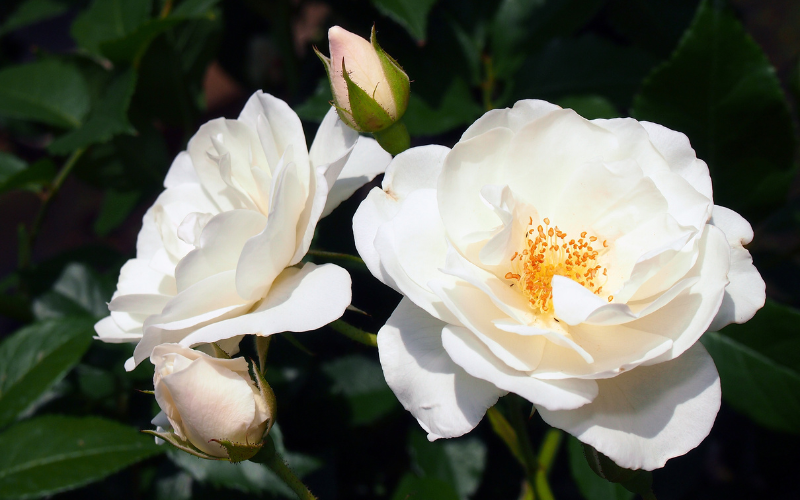
Iceberg Rose, or Rosa ‘Korbin’, is a stunning member of the Rosaceae family. It is native to Germany and comes in a range of hues such as pure white, gentle pink, and light mauve. Blooming from late spring to early autumn, they need well-drained, rich soil and can grow up to 6 ft. tall.
Rose petals are also used to make essential oils or infusions due to their anti-inflammatory and antioxidant effects. It has fragile, double-layered blooms with a mild scent and the petals are aligned in a cup shape, giving a beautiful and elegant look. Its lush foliage is vibrant green and creates a lovely backdrop for the dazzling blooms.
| Scientific Name | Rosa ‘Iceberg’ |
| Native Range | Germany, Asia |
| Flowering Season | Summer to fall |
Indian Strawberry
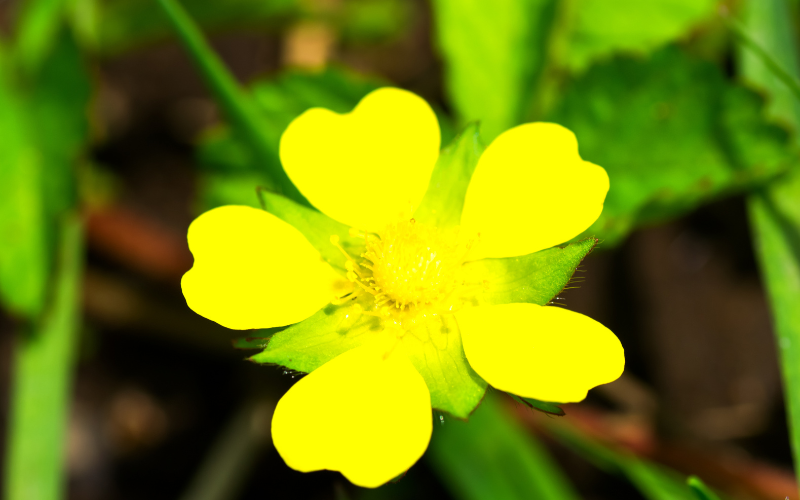
Indian Strawberry, scientifically known as Potentilla indica, is a unique Rosaceae family plant. Native to Asia these come in colors, with little yellow blossoms and bright red fruits that mimic strawberries. They bloom in the spring and summer months, need well-drained soil, and can grow up to 8 inches tall.
It also has anti-inflammatory and antioxidant effects, and its leaves have a unique scent that is used in herbal teas and remedies. With their bright blooms and lovely foliage, Indian strawberries give a charming touch to any garden.
| Scientific Name | Potentilla indica |
| Native Range | Asia |
| Flowering Season | Spring to summer |
Inca Lily
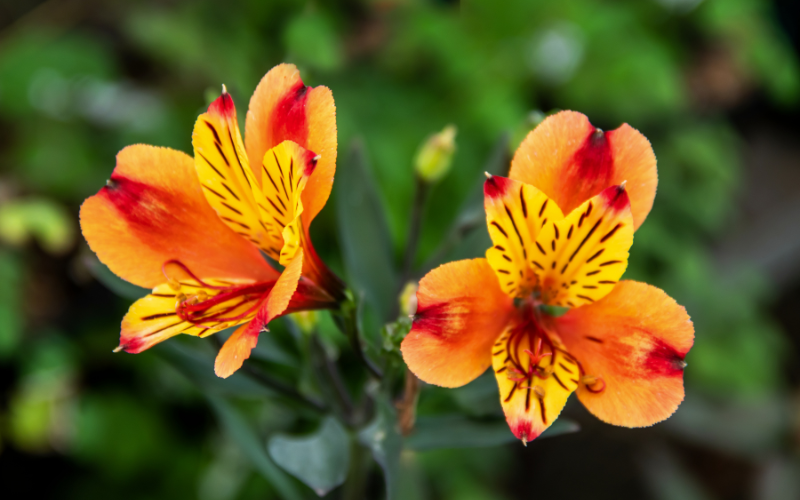
Inca Lily, or Peruvian Lily, is a beautiful flower of the Alstroemeriaceae family. Native to South America, these come in a range of hues, including pink, red, yellow, orange, and white.
Blooming from spring to summer, they can grow up to 3 feet tall and prefer well-draining soil, rich in organic matter. These are trumpet-shaped flowers with different trends and thin petals that are often spotted or striped. Inca Lilies continue to charm nature lovers, with their enduring blooms and lovely colors.
| Scientific Name | Alstroemeria |
| Native Range | South America |
| Flowering Season | Summer to fall |
Ixia
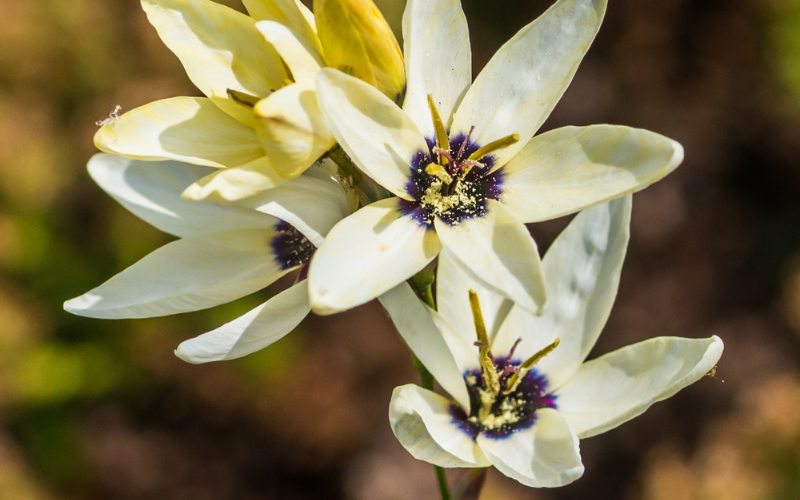
Ixia, also known as the African corn lily, is a lovely flower in the Iridaceae family. Native to South Africa, it comes in various colors, including pink, purple, red, yellow, and white.
It blooms in the spring and summer, thrives in well-drained soil, and can grow up to 24 inches tall. Ixia is a stunning and diverse flower with beautiful clusters of delicate, star-shaped flowers on thin stems that can enhance the look of any garden.
| Scientific Name | Ixia viridiflora |
| Native Range | South Africa |
| Flowering Season | Spring to summer |
Ironweed
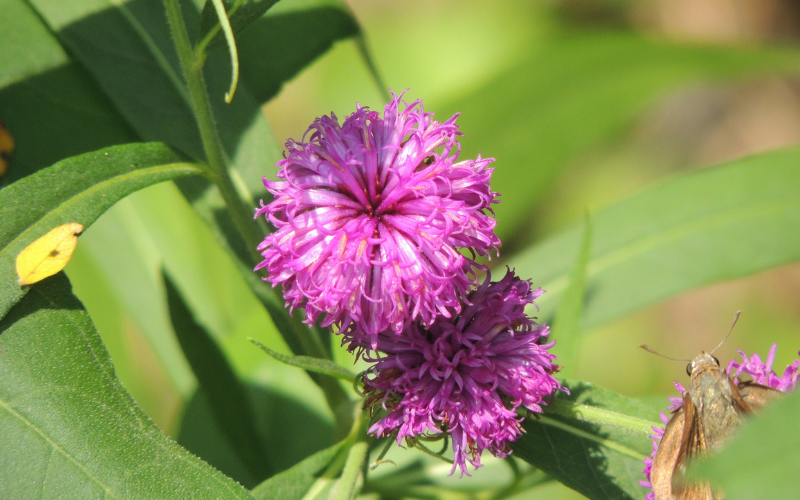
Ironweed, or Vernonia, is native to North America that belongs to the Asteraceae family. Ironweed blooms in clusters of deep purple or magenta flowers from midsummer to early autumn, attracting pollinators such as butterflies and bees with its nectar-rich blossoms.
This flower prefers well-drained soil and can reach a height of 8 feet. Ironweed gives a touch of natural beauty with its tall stature, colorful blooms, and ability to entice fauna.
| Scientific Name | Vernonia |
| Native Range | North & South America |
| Flowering Season | Summer to fall |
Italian Bellflower
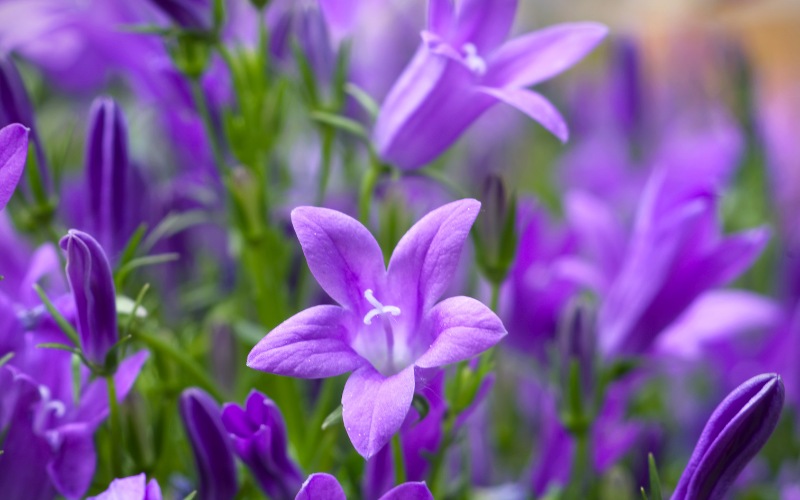
Italian Bellflower, or Campanula isophylla, is a lovely flower in the Campanulaceae family. Native to Italy, these blooms in blue, purple, pink, and white. Blooming from late spring to early summer, it can grow up to 3 ft. tall in well-drained, fertile soil.
It also has anti-inflammatory effects and may be useful in treating respiratory problems and skin irritations. Italian Bellflower has lovely bell-shaped blooms that fall from tall, thin stems and the petals are nicely veined, and enhance their charm.
| Scientific Name | Campanula isophylla |
| Native Range | Italy |
| Flowering Season | Summer to fall |
Incarvillea
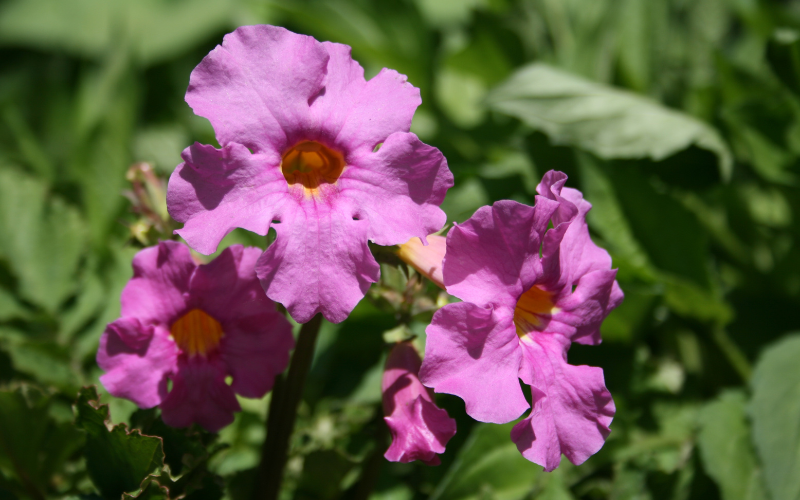
Incarvillea, or Hardy Gloxinia, is a lovely plant in the Bignoniaceae family. It is native to the Himalayas and parts of China and comes in a range of hues, including pink, purple, and white.
Blooming from late spring to early summer, these thrive in well-drained soil, growing up to 3 ft. tall. Incarvillea has trumpet-shaped flowers, which are elegantly patterned and surrounded by rich foliage, forming a stunning visual display that attracts any viewer.
| Scientific Name | Incarvillea delavayi |
| Native Range | China |
| Flowering Season | Summer |
Indian Cress
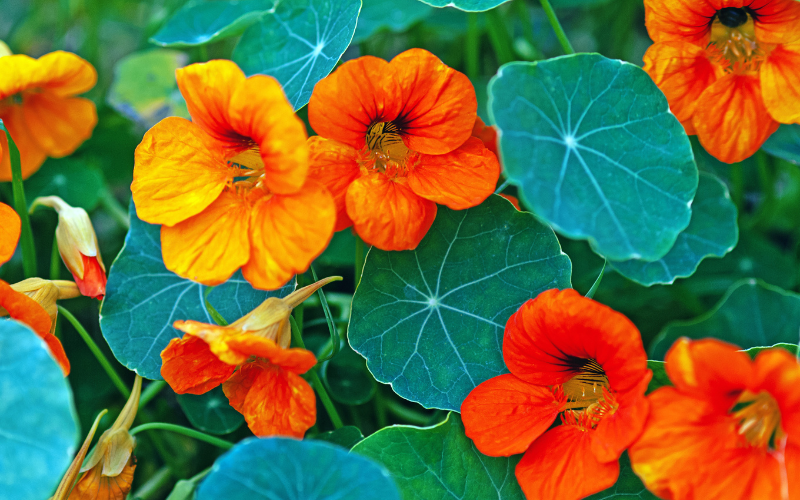
Indian Cress, or Tropaeolum majus, is an attractive flower in the Tropaeolaceae family. Native to South America these come in vibrant oranges, yellows, and reds. These thrive in well-drained soil and can grow up to 10 ft. tall, blooming in the summer and autumn months.
Indian cress may also have antibacterial, anti-inflammatory, and antioxidant effects. Its trumpet-shaped flowers hang over the foliage, giving an eye-catching image. The leaves are spherical and strongly lobed, like lily pads, and are usually a dark green color.
| Scientific Name | Incarvillea delavayi |
| Native Range | China |
| Flowering Season | Summer |
Indian Senna
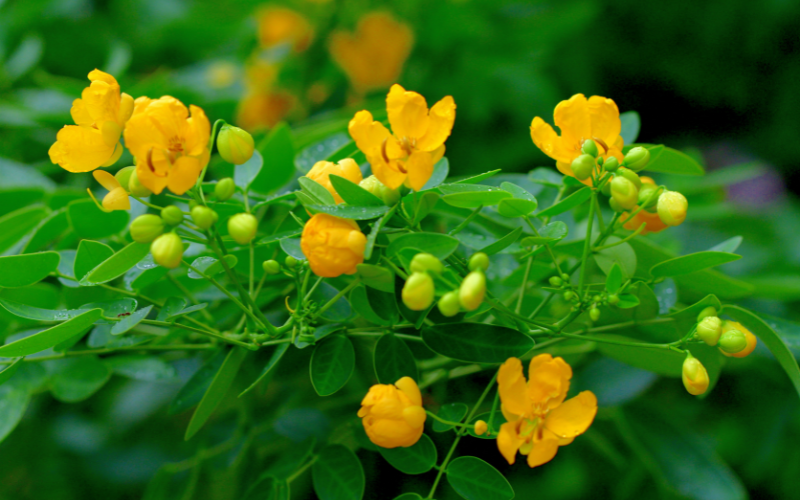
Cassia Angustifolia, sometimes known as Indian Senna, is an interesting plant in the Fabaceae family. This flower is native to India and is recognized for its exquisite yellow petals that bloom during the summer months. It grows up to 6 feet tall and prefers well-drained soil.
Traditionally, its leaves and pods have been used for their laxative properties. The blossoms are not only physically appealing, but they also have a nice aroma that attracts butterflies and bees.
| Scientific Name | Tropaeolum majus |
| Native Range | South America |
| Flowering Season | Summer to fall |
Indian Hawthorn
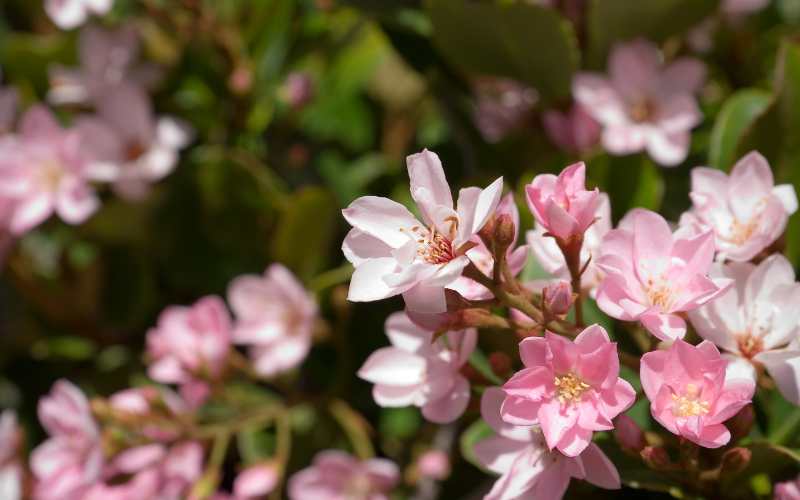
The Indian Hawthorn, or Rhaphiolepis indica, is a beautiful flower of the Rosaceae family. Native to Southeast Asia, this comes in a range of colors, including pink, white, and red. It blooms in the spring and grows up to 6 ft. tall in well-drained soil.
The glossy, leathery leaves of Indian Hawthorn are dark green in color. Due to its dense, bushy growth style, the shrub is great for adding texture and structure to the garden.
| Scientific Name | Senna alexandrina |
| Native Range | Northern Africa |
| Flowering Season | Summer to fall |
Inca Marigold
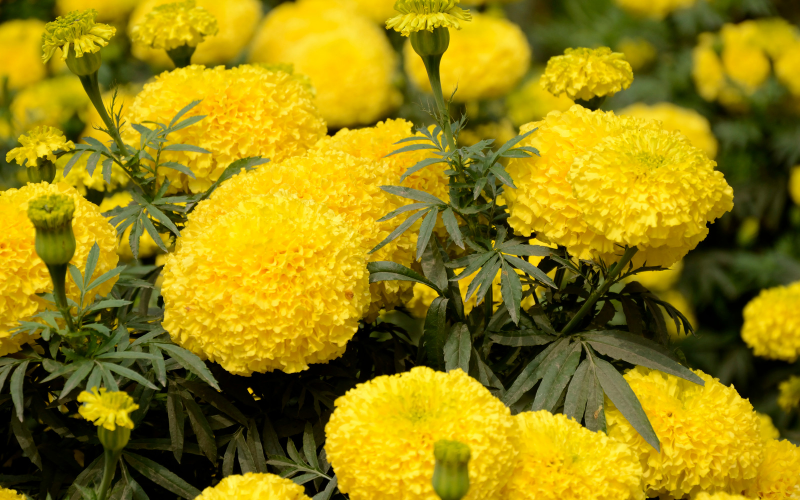
Inca Marigold, or Tagetes erecta, is a colorful and attractive Asteraceae family flower. Native to Mexico and Central America these come in a range of hues, including yellow, orange, and red. Blooming in early summer and thrive in well-drained soil, growing up to 6 ft. tall.
The flowers resemble daisies, with many layers of petals wrapping a visible center disc. The Inca Marigold’s bright hues and lovely petal arrangement make it a true showpiece in any garden, enticing butterflies and other pollinators with its nectar-rich blooms.
| Scientific Name | Rhaphiolepis indica |
| Native Range | Eastern & Southeastern Asia |
| Flowering Season | Spring |
Island Snapdragon
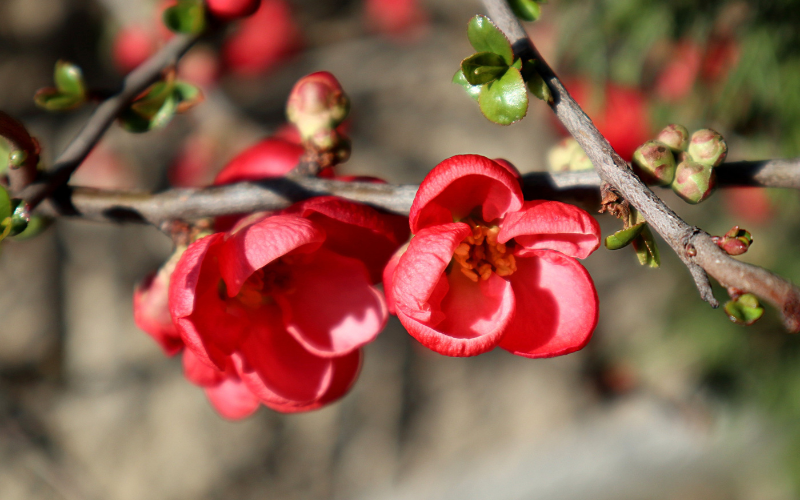
Island Snapdragon, or Galvezia speciosa, is an attractive flower of the Scrophulariaceae family. Native to the California Channel Islands it blooms in red, pink, and occasionally orange or white.
Blooming from late spring to early summer prefers well-drained soil and can grow to be 4 ft. tall. Its different appearance, with tubular blossoms and lush green leaves, gives a natural touch of charm to any garden.
| Scientific Name | Tagetes erecta |
| Native Range | Mexico |
| Flowering Season | Summer to fall |
Indian Balsam
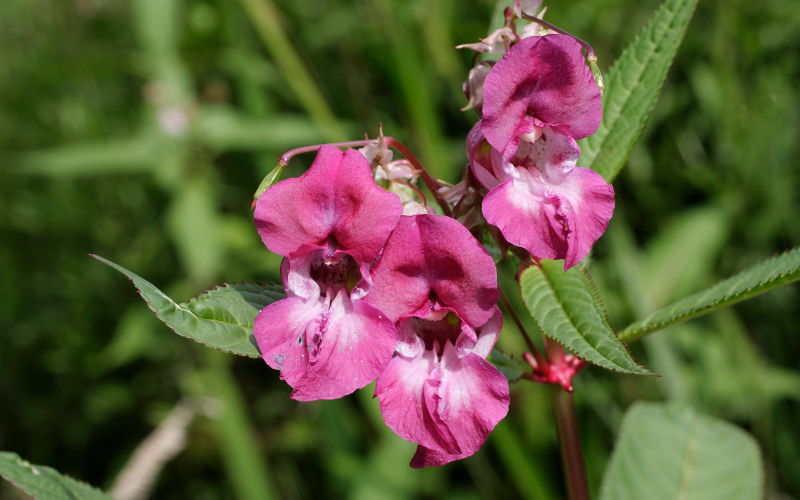
Impatiens balsamina, or Indian Balsam, is a beautiful flower in the Balsaminaceae family. Native to India and Southeast Asia this comes in a range of hues, including pink, purple, red, and white.
Blooming from late spring to early fall, need well-drained soil and can grow up to 6 ft. tall. The flowers are trumpet-shaped and have a unique spike at the back. Indian Balsam has thin, lance-shaped leaves arranged along the stem, adding to its overall beauty.
| Scientific Name | Gambelia speciosa |
| Native Range | California and Mexico |
| Flowering Season | Spring to fall |
Italian Alder
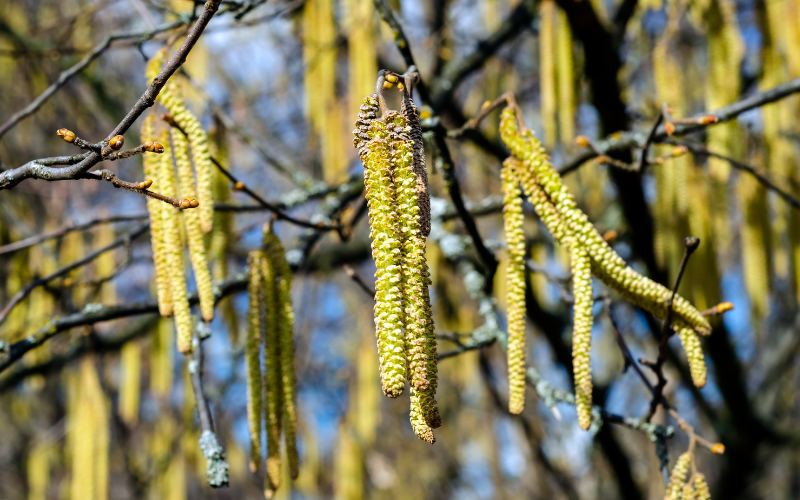
Italian Alder, or Alnus cordata, is a lovely Betulaceae tree. Its color ranges from deep green to dazzling yellow-green and is native to Italy. It blooms in the spring and grows up to 60 feet tall in moist, well-drained soils.
Catkins, which are tiny, cone-like structures that are usually reddish or yellowish in color, bloom on Italian Alder. Its branches have an elegant, spreading look, and its leaves are oval in shape. The tree’s unique, silvery bark adds to its overall aesthetic appeal.
| Scientific Name | Impatiens glandulifera |
| Native Range | Eastern and Southern Asia |
| Flowering Season | Summer to fall |
Irish Heath
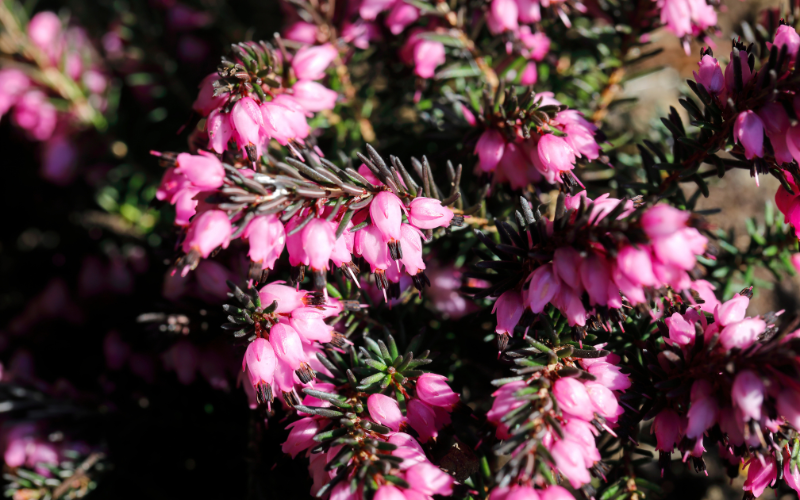
Irish Heath, or Erica cinerea, is a fascinating and beautiful plant of cultural and landscape significance in Ireland. It has blossoms that are vibrant pink and purple.
It blooms from late spring to early summer and prefers acidic, well-drained soil. It can grow up to 3 ft. tall. Irish heath has little needle-like leaves that form spirals on the stems. The flowers are bell-shaped and stand out against the green foliage.
| Scientific Name | Alnus cordata |
| Native Range | Italy and Corsica |
| Flowering Season | Late winter to spring |
Inkberry
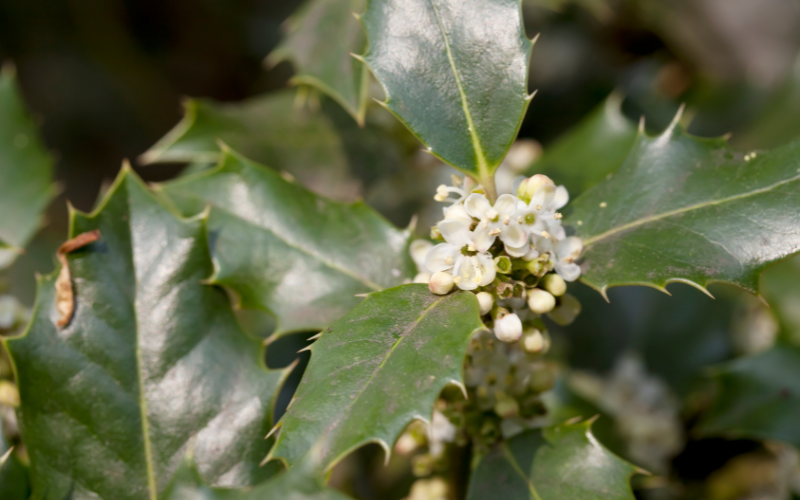
Inkberry, or Ilex glabra, is a unique plant of the Aquifoliaceae holly family. Native to the eastern United States, inkberry truly shines as it bears small, white blossoms that attract pollinators until turning into dark purple berries in the fall.
These berries are a vital source of food for birds and other beings. Blooms in late spring and early summer thrive in wet acidic soils and can reach up to 8 ft. tall. The Inkberry is an attractive shrub adding beauty and motive to any area.
| Scientific Name | Ilex glabra |
| Native Range | Eastern North America |
| Flowering Season | Spring to summer |
Indian Mallow
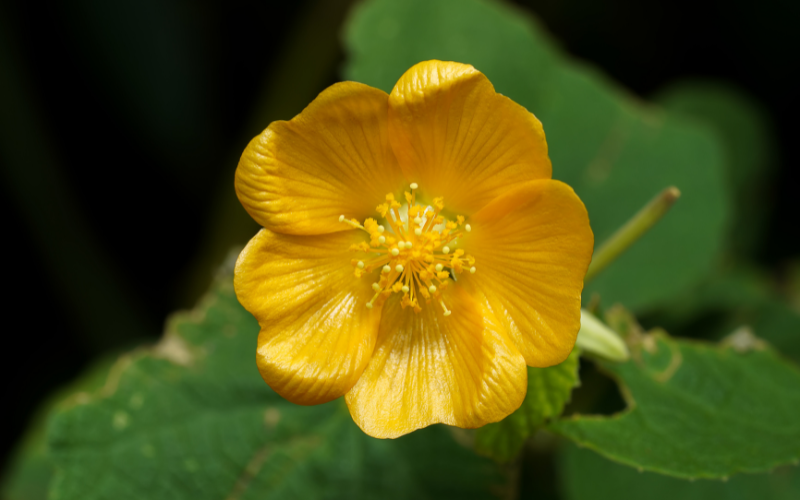
Indian Mallow, or Abutilon indicum, is an amusing flower in the Malvaceae family. Native to India, Southeast Asia, and Australia, this comes in a range of colors, including pink, orange, yellow, and white.
Blooms in late spring or early summer prefer well-drained soil and can grow up to 6 ft. tall. Indian Mallow has anti-inflammatory, diuretic, and analgesic properties and has a distinct and appealing look. The leaves are heart-shaped and have a glossy feel, giving a softness to the overall look.
| Scientific Name | Abutilon indicum |
| Native Range | Africa, Asia, Australia, South America |
| Flowering Season | Spring to fall |
Island Tree Mallow
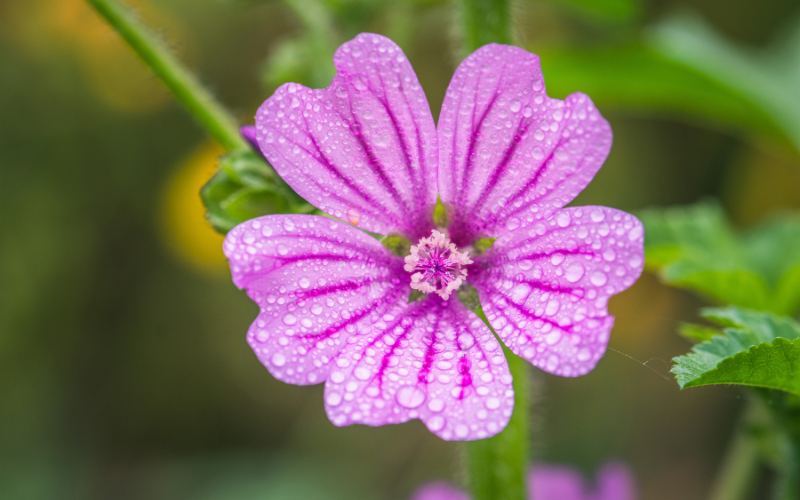
Island Tree Mallow, also known as Malva arborea, is a member of the Malvaceae family. Native to California this comes in a range of hues, including pink, purple, and white. Blooms in late spring to early summer need well-drained, healthy soil and can grow up to 12 ft. tall.
Its leaves are widely used for their calming and anti-inflammatory effects, often used for teas or used for skin issues. It has palmate leaves with lobed edges and a silky feel. The flowers are tiny and lovely, with large petals giving a unique look.
| Scientific Name | Malva assurgentiflora |
| Native Range | California |
| Flowering Season | Spring to summer |
Ivory Arum
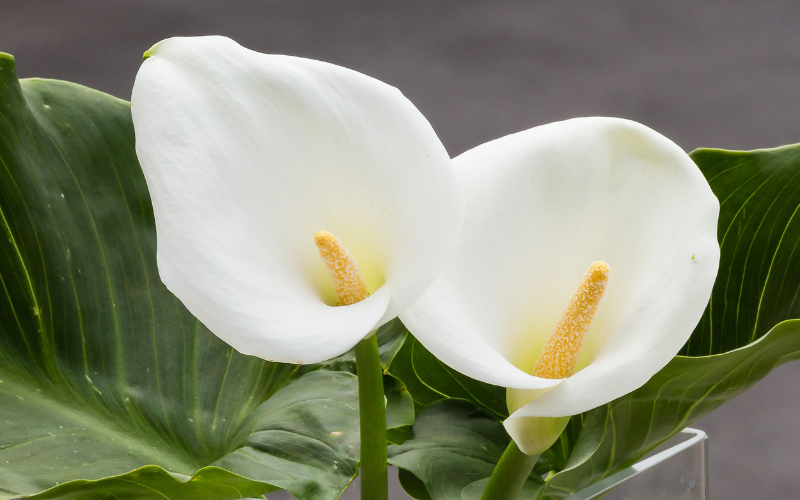
Ivory Arum is a beautiful flower. It is scientifically known as Zantedeschia aethiopica. It is native to South Africa. The flower is normally pure ivory or white in color, while certain variants may include cream or mild yellow colors.
Ivory Arum is a water-loving plant and is often found in wetlands, ponds, and marshy areas. It can be grown in gardens and as a potted plant, where it thrives in moist, well-drained soil and partial shade.
| Scientific Name | Zantedeschia aethiopica |
| Native Range | South Africa |
| Flowering Season | Spring and Early Summer |
Italian White Sunflower
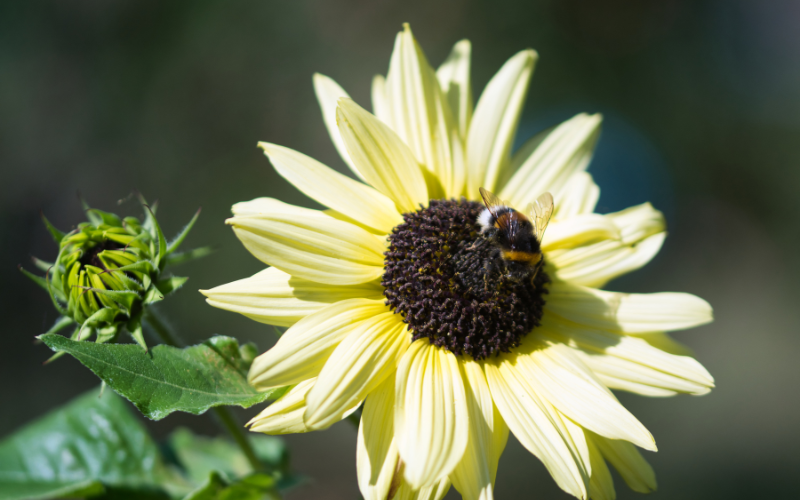
The Italian White Sunflower is a lovely flower. It is also known as “Italian White” or “Helianthus annuus Italian White.” These sunflowers can vary in size but often produce blooms that are 4 to 6 inches (10 to 15 cm) in diameter.
It thrives in full sunlight and well-drained soil. These sunflowers are relatively easy to grow and can be started from seeds.
| Scientific Name | Helianthus annuus |
| Native Range | North America |
| Flowering Season | Summer |
Italian Sainfoin
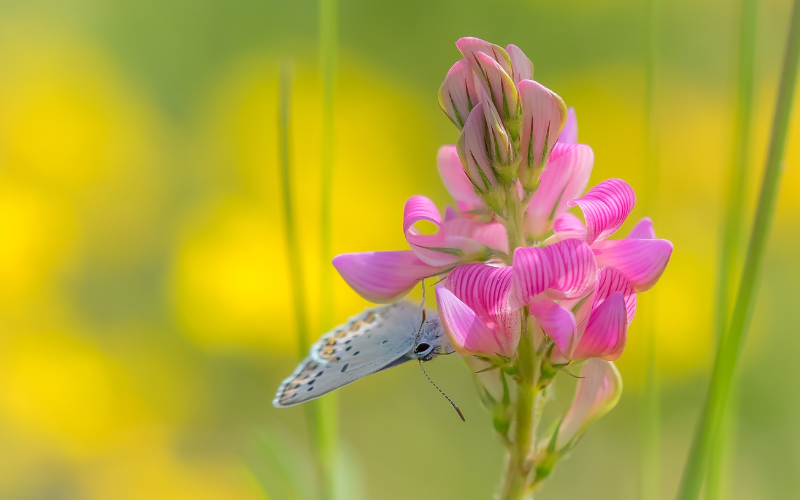
Italian sainfoin is a charming flower. It is scientifically known as Onobrychis viciifolia. It is native to the Mediterranean region. It typically grows to a height of 1 to 2 feet (30 to 60 cm).
The flowers of Italian sainfoin are small and typically pink to purple in color. It blooms in the summer months. It thrives in a range of soil conditions, making it a popular choice among gardeners and farmers.
| Scientific Name | Sainfoin |
| Native Range | Malta, Algeria, Morocco, Tunisia, southern Italy and Spain |
| Flowering Season | Spring and Autumn |
Italian Honeysuckle
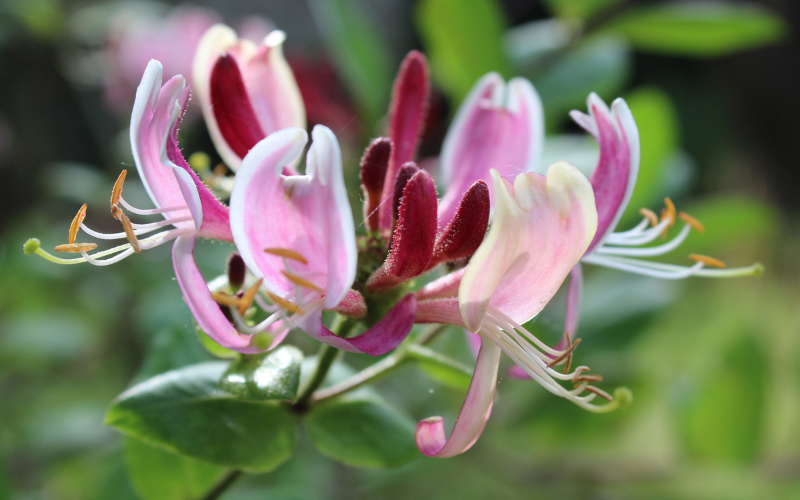
The Italian honeysuckle is a beautiful flower. It is also known as Lonicera caprifolium. It is native to Italy. The Italian Honeysuckle is a climbing vine that can reach heights of up to 20 feet (6 meters) or more.
It thrives in well-draining soil and can tolerate partial to full sun, making it a versatile garden plant. Its color ranges from creamy white to pale yellow.
| Scientific Name | Lonicera caprifolium |
| Native Range | Europe |
| Flowering Season | Late spring to early summer |
Italian Clematis
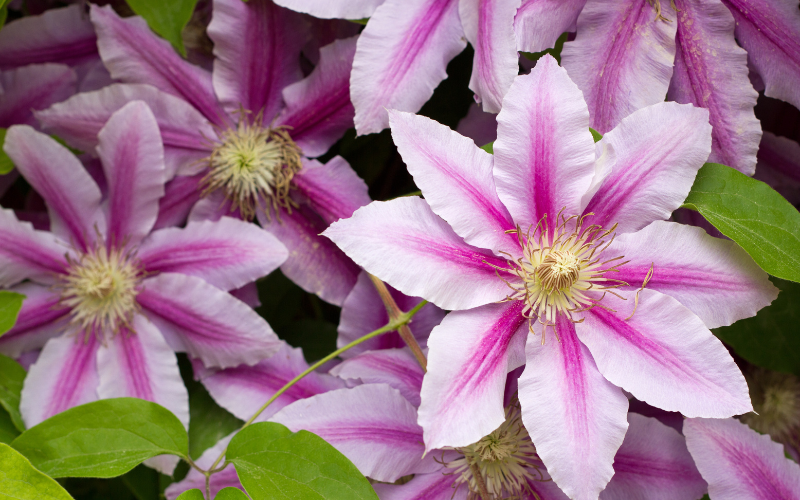
Italian Clematis is a stunning flower. It is also known as Clematis viticella. The flowers can come in various colors, including shades of purple, blue, pink, and white. Each flower has four to six petals that create a bell-like shape, and they often have a contrasting center of stamens.
Italian Clematis is a climbing vine that can reach heights of 8 to 12 feet (2.5 to 3.7 meters). Italian Clematis thrives in well-draining soil and prefers full to partial sun.
| Scientific Name | Clematis viticella |
| Native Range | Southern Europe to Asia |
| Flowering Season | Summer and Into Early Autumn |
Italian Bugloss
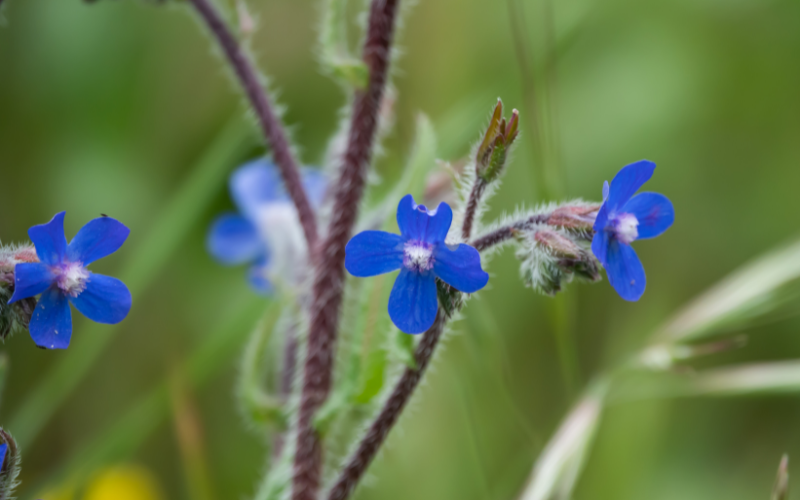
The Italian Bugloss is a mesmerizing flower. It is scientifically known as Anchusa azurea. It is native to the Mediterranean region. The flowers can also occasionally appear in shades of pink or white.
Italian Bugloss is a herbaceous annual plant that typically grows to a height of 2 to 3 feet (60 to 90 cm). It thrives in well-draining soil and prefers full sun to partial shade.
| Scientific Name | Anchusa azurea |
| Native Range | Europe, western Asia, and eastern Maghreb |
| Flowering Season | Late Spring to Early Summer |
Inland Sea Oats
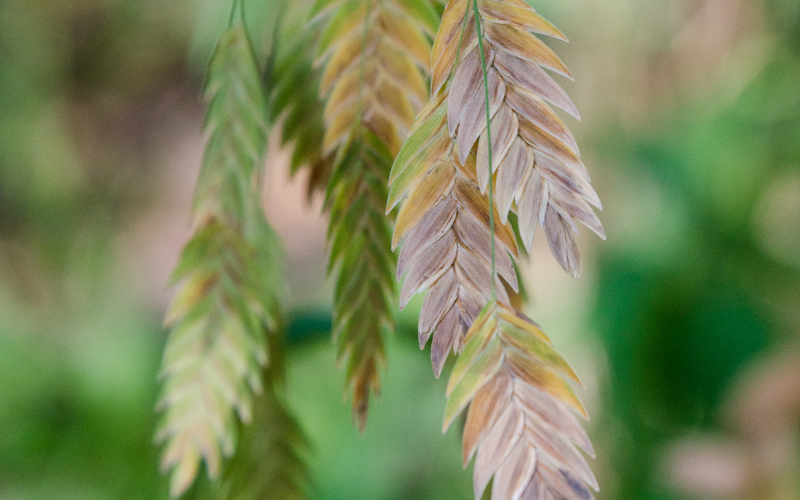
The Inland Sea Oats is a beautiful flower. It is scientifically known as Chasmanthium latifolium. It is a native North America. They thrive in partial to full shade and are well-suited for woodland gardens and shady areas.
It is easy to care for, thriving in both sun and shade and tolerating a range of soil types.
| Scientific Name | Chasmanthium latifolium |
| Native Range | North America |
| Flowering Season | Summer Through Fall |
Indigofera
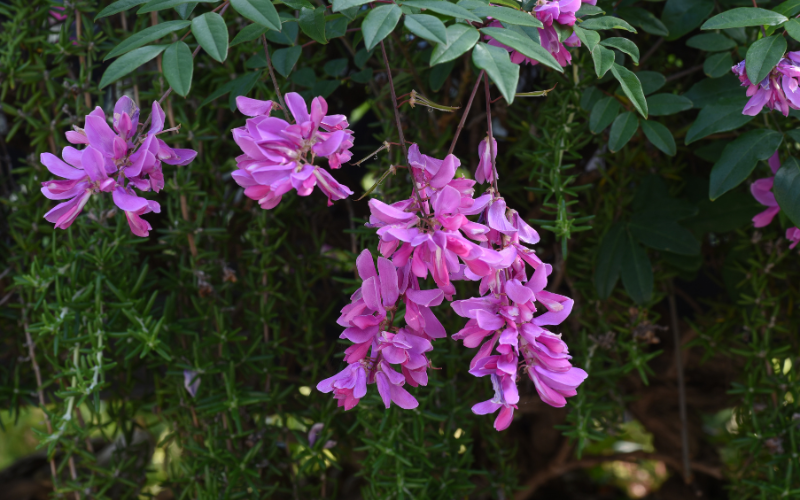
The Indigofera flower is a fascinating and beautiful plant. It is native to the tropical regions of Asia and Africa. The flower’s colors include shades of pink, purple, and white.
They thrive in well-draining soil and typically prefer full sun to partial shade. Generally, Indigofera plants tend to bloom during the warm months of spring and summer.
| Scientific Name | Indigofera tinctoria |
| Native Range | Himalaya |
| Flowering Season | Spring and Summer |
Italian Aster
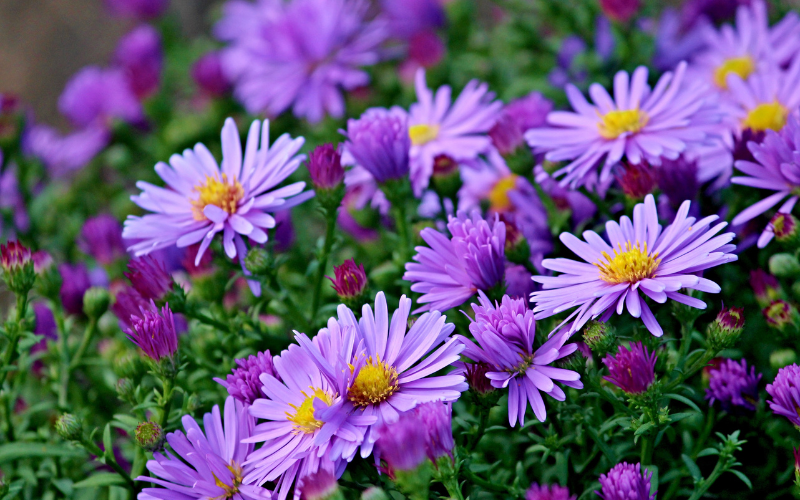
The Italian Aster is a stunning and vibrant flower. It is also known as Aster amellus. It comes in a variety of colors, including shades of pink, purple, blue, and white.
It typically blooms in late summer or early fall. They generally prefer full sun to partial shade and well-draining soil.
| Scientific Name | Aster amellus |
| Native Range | Europe and Western Asia |
| Flowering Season | Late Summer to Mid-Fall |
Indigo Bush
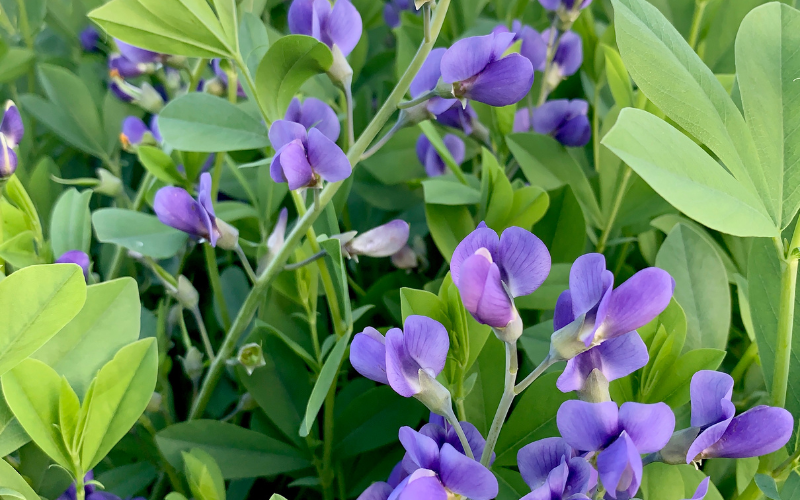
The Indigo bush is a beautiful flower. It is also known as Baptisia australis. It is native to North America. Indigo bushes bloom in late spring and early summer. It is typically blue, indigo, or violet in color.
They are known for their ability to thrive in well-draining soil and under full-sun conditions. It is a low-maintenance option for gardeners.
| Scientific Name | Amorpha fruticosa |
| Native Range | North America |
| Flowering Season | Spring and Summer |
Question & Answer
Which flower blooms in the snow?
One of the flowers that is known to bloom in the snow is the Snowdrop (Galanthus).
What do flowers produce?
Flowers produce nectar, a sugary liquid, which serves as a reward for pollinators.
What is a female flower called?
In flowering plants, the female reproductive structure of a flower is called the pistil or carpel.
What is an imperfect flower?
It is a flower that has either stamens (male reproductive structures) or pistils (female reproductive structures), but not both.
How do flowers reproduce?
Flowers reproduce through a process called sexual reproduction, which involves the transfer of pollen from the male reproductive organs to the female reproductive organs of the same or a compatible flower. The reproductive organs of a flower are the stamens (male) and pistils (female).
